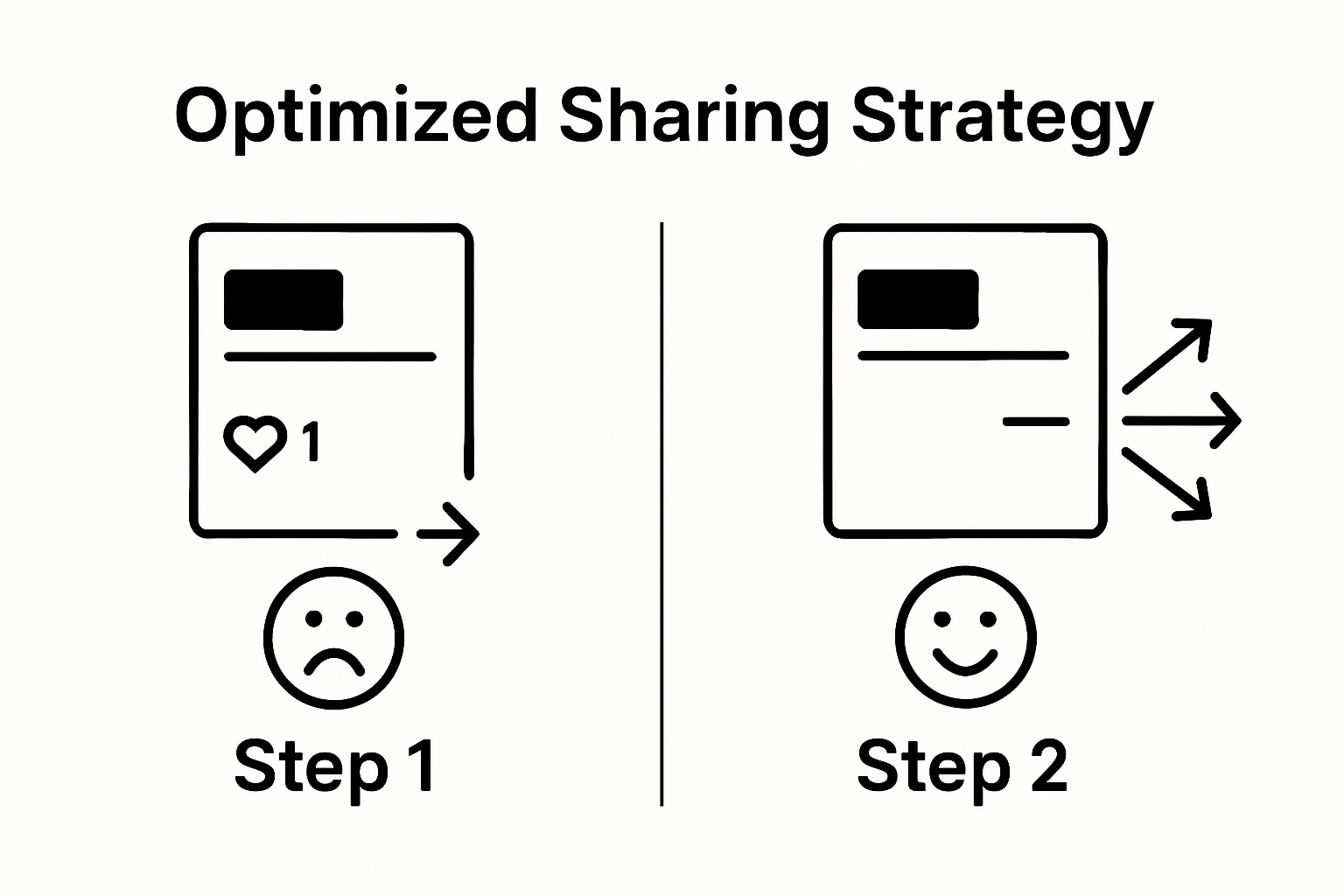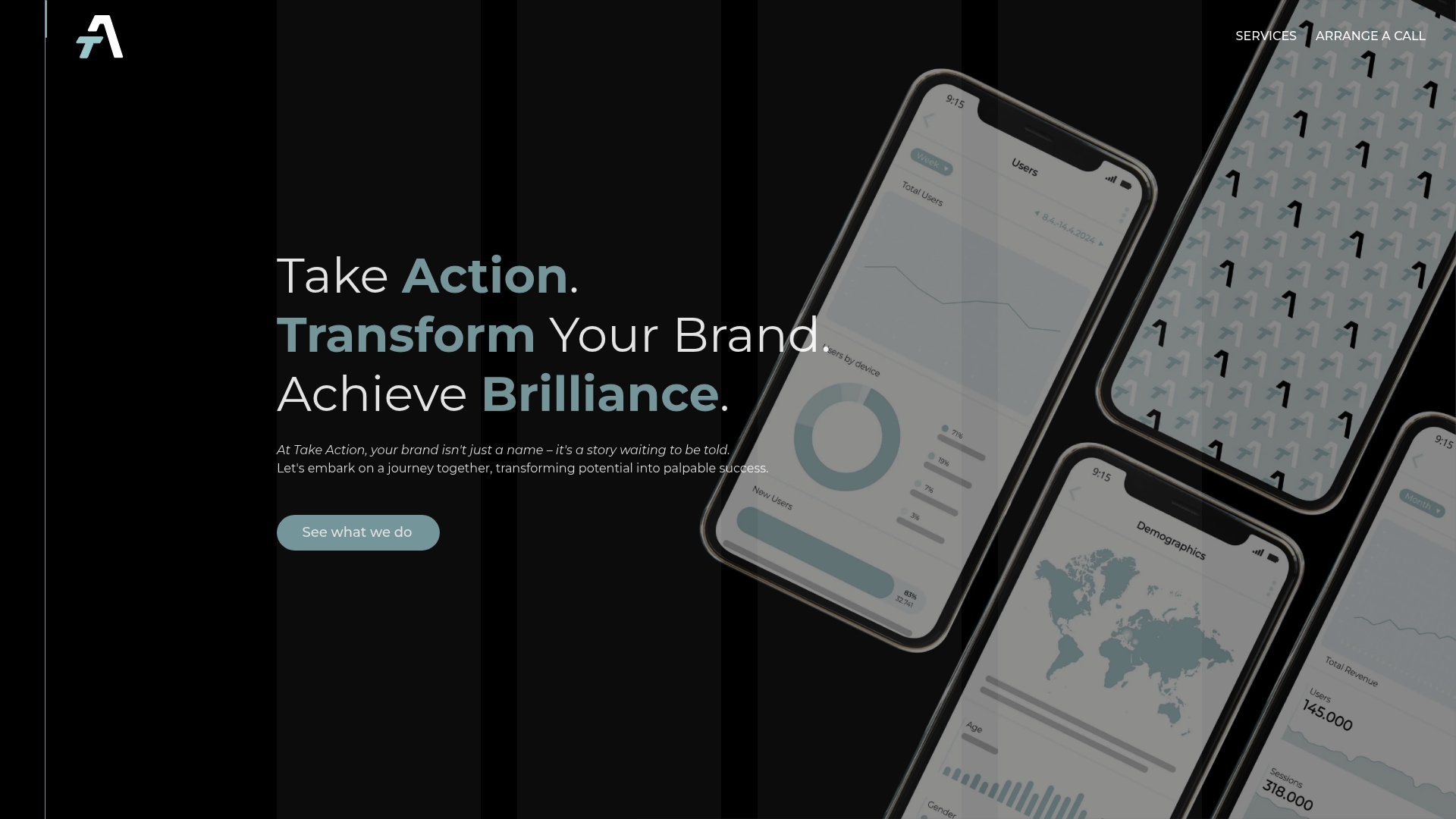How to Boost Social Shares for Ecommerce Success
Brands are scrambling to get their ecommerce content shared across social media, chasing every new trend and tool. But the metrics that really matter are usually hiding in plain sight. Only 1 out of every 11 social media posts actually gets shared by users, according to National Institutes of Health research. Most brands miss out on a huge share of potential customers—not because they lack followers, but because their strategy never moves beyond surface numbers.
Table of Contents
- Step 1: Analyze Your Current Social Media Performance
- Step 2: Optimize Your Content For Shareability
- Step 3: Implement Strategic Call-To-Actions
- Step 4: Leverage Influencers And Partnerships
- Step 5: Monitor And Adjust Your Strategies
Quick Summary
| Key Point | Explanation |
|---|---|
| 1. Analyze Current Social Media Metrics | Access platform analytics to evaluate audience engagement and identify growth opportunities. |
| 2. Create Shareable, Emotionally Engaging Content | Use visual storytelling and relatable narratives to compel users to share your content. |
| 3. Design Compelling Call-to-Actions | Craft clear, enticing CTAs that resonate with user motivations to encourage actions and shares. |
| 4. Collaborate with Influencers | Partner with influencers who align with your brand to authentically promote your products to engaged audiences. |
| 5. Continuously Monitor and Adjust Strategies | Regularly review analytics and adapt your strategies based on performance data to enhance engagement. |
Step 1: Analyze Your Current Social Media Performance
Understanding your current social media performance is the critical foundation for boosting social shares in your ecommerce strategy. This initial step provides a clear snapshot of where your brand stands and identifies precise opportunities for growth. By meticulously examining your existing social media metrics, you will create a data driven roadmap for increasing engagement and viral potential.
Begin by accessing the native analytics within each social platform you currently use. Facebook Insights, Instagram Analytics, and Twitter Analytics offer comprehensive data about your current performance. Look beyond surface level metrics like follower count and dig deeper into engagement rates, which reveal how your audience truly interacts with your content. Pay special attention to metrics such as likes, comments, shares, and click through rates. These indicators will help you understand which types of content resonate most with your audience.
Explore our guide on digital marketing insights can help you develop a more nuanced understanding of your performance tracking. The goal is not just to collect data, but to interpret it strategically. Analyze which posts generate the most shares, what time of day your audience is most active, and which content formats drive the highest engagement. Are your product images generating more interaction than video content? Do behind the scenes posts perform better than direct sales pitches?
According to research from the National Institutes of Health, effective social media performance tracking involves multiple dimensions of measurement. Create a spreadsheet to document your findings, tracking key performance indicators for each platform. Your tracking document should include:
Here is a checklist table to help you track the essential metrics mentioned for analyzing your current social media performance. Use this at the start of your strategy to ensure no critical data points are missed.
| Metric | Description | Why It Matters |
|---|---|---|
| Total followers | Number of users following your brand account | Shows overall audience reach |
| Average engagement rate | Percentage of users interacting with each post | Reveals content resonance and loyalty |
| Share rate | Frequency users share your posts | Indicates content virality and effectiveness |
| Click-through rate | Percentage of users clicking on your content links | Measures ability to drive traffic |
| Top performing content types | Formats or topics generating highest interaction | Helps focus on most successful content styles |
- Total followers
- Average engagement rate
- Share rate
- Click through rate
- Top performing content types
This systematic approach transforms raw data into actionable insights. By understanding your current social media landscape, you set the stage for targeted improvements that can dramatically increase your social shares and expand your ecommerce brand’s digital reach.
Step 2: Optimize Your Content for Shareability
Optimizing your content for shareability transforms passive followers into active brand ambassadors who willingly spread your message across social networks. This critical step turns your social media strategy from a broadcast platform into a dynamic engagement engine that naturally amplifies your reach and attracts potential customers.
Start by crafting content that speaks directly to your audience’s emotions and interests. Visual storytelling becomes your primary weapon in this quest. High quality images and short video clips that showcase your products in authentic, relatable scenarios will capture attention faster than standard product shots. Think about creating content that solves a problem, tells a compelling story, or provides unexpected value. Your goal is to make your content so engaging that users feel compelled to share it with their network.
Learn more about personal brand growth strategies can help you understand how to create shareable content that resonates. According to research from the National Institutes of Health, content that generates emotional responses drives significantly higher sharing rates. This means moving beyond traditional sales pitches and creating narratives that connect with your audience on a deeper level.
Consider developing a consistent content framework that encourages sharing. Your content should include elements that make sharing effortless and attractive:
- Visually striking graphics
- Concise, memorable captions
- Clear value proposition
- Relatable human stories
- Unexpected or surprising insights
Remember that shareability is about creating content that reflects your brand’s unique personality while providing genuine value to your audience. Each piece of content should feel like a gift your followers want to pass along, not just another marketing message. Test different content styles, monitor your performance metrics, and continuously refine your approach to discover what truly resonates with your specific audience.

Step 3: Implement Strategic Call-to-Actions
Implementing strategic call-to-actions transforms passive social media interactions into active engagement and potential conversions. Your call-to-action serves as the critical bridge between audience interest and tangible business outcomes, guiding users precisely toward the next desired step in their customer journey.
Effective call-to-actions are clear, compelling, and create a sense of immediate value. Craft your messaging to trigger an emotional response that motivates sharing and action. Instead of generic phrases like “Click Here,” develop more engaging invitations that speak directly to user motivations. For example, “Unlock Your Exclusive Discount” feels more enticing than a standard directive. Your language should create urgency, spark curiosity, and promise a specific benefit that resonates with your target audience.
Learn more about proven strategies to increase online sales can provide additional insights into designing powerful call-to-actions. According to research from the National Institutes of Health, messages that combine emotional triggers with clear, actionable language significantly improve user engagement and sharing potential.
Consider incorporating multiple call-to-action strategies across your social platforms. Each platform requires a nuanced approach that aligns with its unique user behavior and content consumption patterns. On Instagram, visual call-to-actions might involve interactive story polls or swipe-up links. Facebook might benefit from more direct, text-based invitations that encourage comments and shares. Twitter demands concise, punchy directives that capture attention in a fast moving feed.
This table compares effective call-to-action strategies across different social platforms, summarizing their main formats and potential impact, as covered in the article.
| Platform | CTA Format Example | User Motivation Triggered |
|---|---|---|
| Swipe-up links, interactive story polls | Curiosity, exclusivity | |
| Direct text invitations, comment prompts | Community, easy participation | |
| Concise, punchy directives | Urgency, immediacy | |
| Multi-platform | Shareable rewards, exclusive content | Value, sense of belonging |
Your strategic call-to-actions should include elements that naturally encourage social sharing:
- Exclusive content access
- Limited time offers
- Social proof through user testimonials
- Interactive challenges or contests
- Shareable rewards or discounts
Remember that the most powerful call-to-actions feel less like commands and more like opportunities. They should make users feel they are gaining something valuable by taking action and sharing your content. Continuously test and refine your approach, tracking which call-to-actions generate the highest engagement and social share rates.

Step 4: Leverage Influencers and Partnerships
Leveraging influencers and strategic partnerships represents a powerful amplification strategy for boosting social shares and expanding your ecommerce brand’s digital reach. This approach transforms traditional marketing by utilizing trusted voices that can authentically introduce your products to broader, engaged audiences.
Identifying the right influencers requires more than just follower count. Focus on finding content creators whose audience demographics precisely match your target market and whose personal brand aligns with your product’s values. Micro influencers with highly engaged audiences often deliver more meaningful results than celebrities with massive but less interactive followings. Look for creators who demonstrate genuine enthusiasm and create content that naturally integrates products without feeling forced or overly promotional.
Discover our comprehensive guide to influencer marketing can help you refine your partnership approach. According to research from the National Institutes of Health, authentic partnerships that prioritize mutual value generate significantly higher engagement and sharing rates compared to transactional collaborations.
Develop a robust partnership framework that goes beyond simple sponsored posts. Consider creating collaborative content like behind the scenes videos, product development stories, or exclusive limited edition collections that give influencers genuine creative input. These approaches transform influencers from mere advertisers into true brand partners who are motivated to share and promote your content organically.
When designing influencer partnerships, prioritize relationships that offer mutual benefits:
- Unique discount codes for influencer audiences
- Revenue sharing models
- Long term brand ambassador programs
- Co created content opportunities
- Performance based compensation structures
Successful influencer partnerships require continuous communication, clear expectations, and flexibility. Track performance metrics carefully, be open to creative input from your partners, and remember that the most powerful social shares emerge from genuine connections and shared storytelling.
Step 5: Monitor and Adjust Your Strategies
Monitoring and adjusting your social sharing strategies transforms data into actionable insights that continuously improve your ecommerce performance. This critical step turns your social media approach from a static campaign into a dynamic, responsive system that evolves with your audience’s changing preferences and behaviors.
Successful strategy adjustment requires comprehensive and consistent tracking across multiple metrics. Implement robust analytics tools that provide real time insights into your social media performance. Google Analytics, native platform insights, and specialized social media tracking tools will become your strategic command center. Pay close attention to not just surface level metrics like likes and shares, but deeper engagement indicators such as click through rates, time spent on linked pages, and conversion rates from social traffic.
Learn more about time management strategies for ecommerce success can help you streamline your monitoring process. According to research from the National Institutes of Health, brands that implement data driven adjustment strategies see substantial improvements in social media engagement and overall marketing effectiveness.
Develop a systematic approach to reviewing and interpreting your social media performance data. Set up a weekly or bi weekly review process where you critically examine your metrics, identifying patterns, successes, and areas for improvement. Look for trends in content type, posting times, messaging style, and audience interaction. Are video posts generating more shares than image posts? Do morning or evening posts receive higher engagement? These insights will guide your strategic refinements.
Your monitoring and adjustment strategy should include key focus areas:
- Comparative performance analysis across platforms
- Audience demographic shifts
- Content type engagement rates
- Conversion metrics from social traffic
- Seasonal performance variations
Remember that strategy adjustment is an ongoing process. What works today might not be as effective tomorrow. Remain flexible, curious, and data driven. Treat each piece of content as a learning opportunity, continuously experimenting and refining your approach. The most successful ecommerce brands view their social media strategy as a living, breathing ecosystem that requires constant nurturing and strategic adaptation.
Ready to Turn Social Shares Into Long-Term Ecommerce Growth?
If you are struggling to translate those hard-earned social shares into real revenue and repeat customers, you are not alone. The article you just explored uncovered the challenges of data tracking, content shareability, and optimizing engagement for tangible results. Now it is time to take the next step and transform every social interaction into a powerful retention engine for your brand.

Stop letting engagement fade after the initial share. Harness the proven impact of email marketing automation and retention strategies that keep your brand top-of-mind. At Take Action, we specialize in turning curiosity into conversions using advanced segmentation, Klaviyo-powered automation, and conversion-focused campaigns that build on your strongest social moments. Discover how our email marketing expertise can recover abandoned carts, nurture new followers into loyal brand advocates, and grow your revenue beyond the limitations of paid ads. Book a personalized consult now to see how we can help you bridge the gap between social buzz and real business growth.
Frequently Asked Questions
How can I analyze my current social media performance for my ecommerce brand?
To analyze your current social media performance, access the analytics tools available on each platform, such as Facebook Insights and Instagram Analytics. Look for key metrics like engagement rates, shares, click-through rates, and the types of content that resonate most with your audience.
What strategies can I use to optimize my content for better shareability?
To optimize your content for shareability, focus on visual storytelling with high-quality images and videos that evoke emotions. Create relatable, valuable content that engages your audience, and include eye-catching graphics and concise captions that encourage sharing.
What are effective types of call-to-actions for social media?
Effective call-to-actions include clear and compelling phrases that trigger an emotional response, like “Unlock Your Exclusive Discount”. Use actionable language that creates urgency and offers specific benefits, encouraging users to engage and share your content.
How do I leverage influencers to boost social shares for my ecommerce business?
To leverage influencers, identify those whose audience aligns with your target market and values. Build genuine partnerships that foster collaboration on content, and create unique offers such as discount codes for their followers to encourage organic promotion of your brand.
